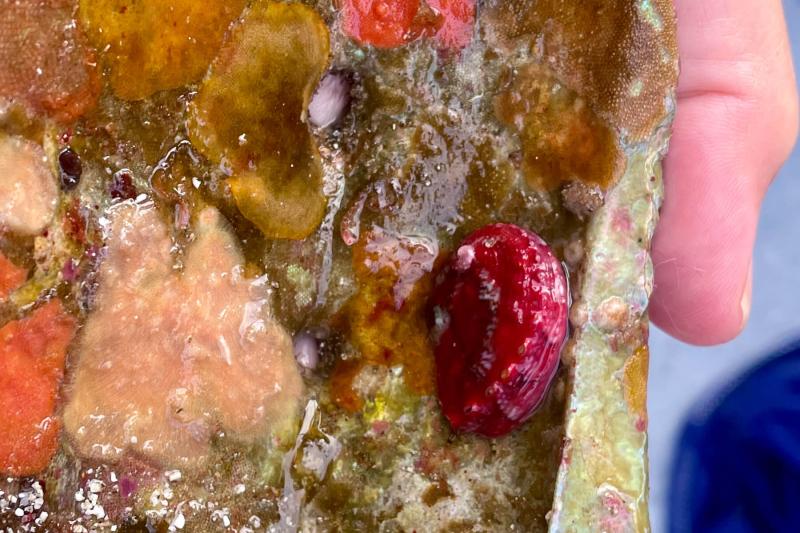During a recent research cruise off the southern coast of California, NOAA Fisheries divers and partners found a juvenile white abalone. It’s one of only three live juveniles observed in natural subtidal reefs along the California coast during the past 20 years. They once numbered in the millions, but are now endangered.
The discovery demonstrates that the highly endangered species, one of NOAA Fisheries’ Species in the Spotlight, is reproducing in the wild. This gives us hope that our restoration efforts in other areas will rebuild their numbers.
“We have been planning this trip—supported by Navy funding—for years,” says Melissa Neuman, NOAA Fisheries’ White Abalone Recovery Coordinator. “And finding adults and a wild juvenile indicates the potential for successful recovery efforts and offers real hope for this species’ survival!”
Abalone are an ecologically, economically, and culturally important species. The abalone’s diet of kelp clears patches of rocky surface so that multiple kelp species can flourish. This increases the diversity of fish and other animals that depend on kelp forest habitat. At one time, the species supported commercial fisheries as well as tribal harvest.
NOAA’s white abalone recovery team, which includes about 20 partners, has placed more than 12,000 captive-bred white abalone on native subtidal reefs since 2019. That provides a foundation for supplementing their recovery in key habitats throughout their range.
“We need to improve reproductive output and maximize survival of white abalone by building populations that are resilient to climate change,” continues Neuman. “We know we can’t do this alone. A major component of conservation is to expand partnerships and inspire people to work with us.”
Many such efforts are underway. With support from NOAA Fisheries, for example, artist Beatie Wolfe and others have created an A-Z stamp sheet and poster to support abalone conservation in Cayucos, California. Each of the 26 letters of the alphabet corresponds to an image of wildlife native to California, beginning with abalone.
White abalone can live to up to 40 years and may reproduce successfully only four to five times over the course of their lives. They also have the broadest depth range of any abalone species in the world, occurring at depths of 15 to 200 feet.
NOAA Fisheries is dedicated to conserving and restoring white abalone. Our scientists use innovative techniques to study, protect, and restore their population. We also work with our partners to ensure that regulations and management plans are in place to reduce poaching and increase the wild abalone population.





